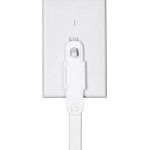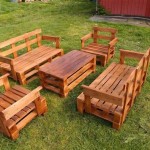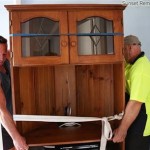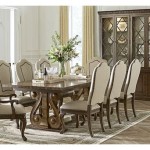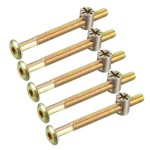How To Get Mould Off Furniture
Mould, a ubiquitous fungus that thrives in damp and poorly ventilated environments, can be a significant problem in homes, impacting both property value and human health. Furniture, particularly upholstered items or wood pieces, provides a suitable breeding ground for mould when exposed to moisture, spills, or high humidity. Addressing mould growth on furniture promptly and effectively is crucial to prevent further damage and safeguard the living environment. This article provides a comprehensive guide on how to safely and efficiently remove mould from various types of furniture.
Mould not only detracts from the aesthetic appeal of furniture but also poses potential health risks. Exposure to mould spores can trigger allergic reactions, respiratory problems, and other health issues, especially in individuals with pre-existing conditions like asthma or allergies. Identifying the type of mould present, while helpful, is not always necessary for removal; the focus should be on eliminating the mould and addressing the underlying moisture problem that caused it. Before beginning any cleaning process, it is imperative to prioritize safety by taking appropriate precautions.
Safety Precautions Before Beginning
Prior to commencing any mould removal process, personal protective equipment (PPE) is essential. This equipment acts as a barrier, minimizing the risk of spore inhalation and skin contact, which can trigger allergic reactions or other health issues. A respirator or a well-fitted N-95 mask is recommended. This will provide a certain level of protection against airborne mould spores during the cleaning process. Additionally, wearing safety goggles is advised to shield the eyes from accidental splashes of cleaning solutions or dislodged mould particles. Finally, using gloves, preferably non-porous ones like rubber or nitrile, will protect the hands from direct contact with mould and cleaning agents.
Adequate ventilation is another critical factor. Working in a well-ventilated area helps to disperse airborne mould spores and reduce the concentration of cleaning fumes. Open windows and doors whenever possible to create a cross-breeze. If natural ventilation is insufficient, consider using a fan to circulate air and exhaust mould spores outdoors. The goal is to minimize the risk of inhaling mould spores and to promote a healthier working environment. Containment of the affected area, if practical, can also prevent the spread of mould spores to other parts of the home. Plastic sheeting and tape can be used to isolate the work area.
Removing Mould from Wooden Furniture
Wooden furniture is particularly susceptible to mould growth due to its porous nature, which allows moisture to penetrate and create favorable conditions for fungal development. The removal process depends on the type of finish and the extent of the mould infestation. Begin by gently removing loose mould spores from the surface using a vacuum cleaner with a HEPA filter. A HEPA filter is crucial as it traps microscopic mould spores and prevents them from being recirculated back into the air. Attach a brush attachment to the vacuum cleaner to gently loosen the mould without damaging the wood finish. Dispose of the vacuum bag or clean the collection container carefully after use to prevent further contamination.
For surface mould on finished wood, a mixture of mild detergent and water can be effective. Mix a small amount of dish soap with warm water and gently wipe the affected area with a soft cloth. Avoid using excessive water, as this can damage the wood finish and exacerbate the mould problem. After cleaning, thoroughly dry the furniture with a clean, dry cloth. If the mould persists, a solution of white vinegar and water (1:1 ratio) can be used. White vinegar is a natural disinfectant and can help to kill mould spores. Test the solution on an inconspicuous area of the furniture first to ensure it does not damage the finish. Apply the vinegar solution with a soft cloth, allow it to sit for a few minutes, and then wipe it clean with a damp cloth. Dry the furniture thoroughly.
For unfinished wood or more stubborn mould stains, a solution of borax and water may be necessary. Mix borax with warm water to create a paste. Apply the paste to the affected area and allow it to sit for several hours or overnight. Borax is a natural fungicide and can effectively kill mould spores and inhibit future growth. After the borax paste has dried, scrub the area gently with a stiff brush to remove the mould and borax residue. Vacuum the area thoroughly to remove any remaining particles. Always wear gloves and a mask when working with borax. For persistent mould stains, sanding the affected area may be necessary. Use fine-grit sandpaper to remove the top layer of wood where the mould is embedded. Be careful not to sand too aggressively, as this can damage the wood. After sanding, clean the area with a damp cloth and allow it to dry thoroughly. Apply a wood sealant or finish to protect the wood from future moisture damage.
Cleaning Mould from Upholstered Furniture
Upholstered furniture, with its fabric and padding, provides an ideal environment for mould growth due to its ability to retain moisture. The removal process requires careful attention to avoid damaging the upholstery and spreading mould spores. Start by vacuuming the affected area thoroughly with a HEPA-filtered vacuum cleaner. Use a brush attachment to loosen mould spores from the fabric. Pay close attention to seams, creases, and other areas where mould tends to accumulate. After vacuuming, dispose of the vacuum bag or clean the collection container carefully.
For minor mould growth, a solution of rubbing alcohol and water (1:1 ratio) can be effective. Rubbing alcohol is a disinfectant and can help to kill mould spores. Test the solution on an inconspicuous area of the upholstery first to ensure it does not damage the fabric. Apply the solution to a clean cloth and gently blot the affected area. Avoid saturating the fabric, as this can lead to further moisture problems. Allow the alcohol to evaporate completely. If the mould persists, a commercial mould remover specifically designed for upholstery can be used. Follow the manufacturer's instructions carefully and test the product on an inconspicuous area first. Apply the mould remover to a clean cloth and gently blot the affected area. Avoid rubbing the fabric, as this can spread the mould spores. Allow the mould remover to sit for the recommended time and then wipe it clean with a damp cloth. Dry the upholstery thoroughly with a fan or hairdryer. If the mould infestation is extensive or the upholstery is delicate, it is best to consult a professional upholstery cleaner.
After cleaning, it is important to deodorize the furniture to remove any lingering mould odors. Sprinkle baking soda liberally over the entire surface of the upholstery and allow it to sit for several hours or overnight. Baking soda is a natural deodorizer and can help to absorb any remaining odors. Vacuum the baking soda thoroughly with a HEPA-filtered vacuum cleaner. Ensure the furniture is completely dry before using it. If possible, place the furniture in direct sunlight to help kill any remaining mould spores and dry the fabric thoroughly. Sunlight is a natural disinfectant and can help to prevent future mould growth.
Preventative Measures for Future Mould Growth
Preventing the recurrence of mould is as important as removing it. Controlling moisture levels is fundamental to preventing mould growth on furniture. Employing dehumidifiers in damp areas, such as basements or rooms with poor ventilation, helps reduce humidity and create an environment less conducive to mould. Aim to maintain indoor humidity levels below 60%. Regularly inspecting furniture for signs of moisture or mould is crucial. Pay close attention to areas that are prone to dampness, such as near windows, doors, and pipes. Early detection allows for prompt action, preventing minor issues from escalating into significant problems.
Improving ventilation within the home is also key. Ensure adequate airflow by opening windows and doors regularly, especially after showering or cooking. Using exhaust fans in bathrooms and kitchens helps remove moisture-laden air. Positioning furniture away from walls allows for better air circulation, reducing the likelihood of moisture buildup behind the furniture. Cleaning spills and stains promptly is essential. Wipe up spills immediately with a clean, dry cloth to prevent moisture from seeping into the furniture. Addressing leaks and water damage promptly is crucial. Repair leaky roofs, pipes, or windows to prevent water from entering the home and creating a breeding ground for mould. Consider using mould-resistant furniture, particularly in areas prone to dampness. Furniture made from materials that are less susceptible to mould growth can help to prevent future problems.

Remove Mold Mildew From Furniture Diy Stop The Stink Musty Moth Balls Youtube

How To Remove Mold From Wood Furniture Rescue One Restoration

Diy Tips For Removing Mold And Mildew From Upholstered Furniture Embassy Cleaners

How To Remove Toxic Black Mold From Wood Youtube

Mold On Furniture The Causes And Prevention Methods Environix

How To Get Mold Out Of Couch Stealtho

How To Remove Mold From Wood Furniture 10 Steps With S

Mold On Wood How To Remove Wooden Furniture

How To Remove Stubborn Mould From Wooden Furniture Premium Door Stripping

What Is The Best Way To Kill Black Mold On Wood
See Also

